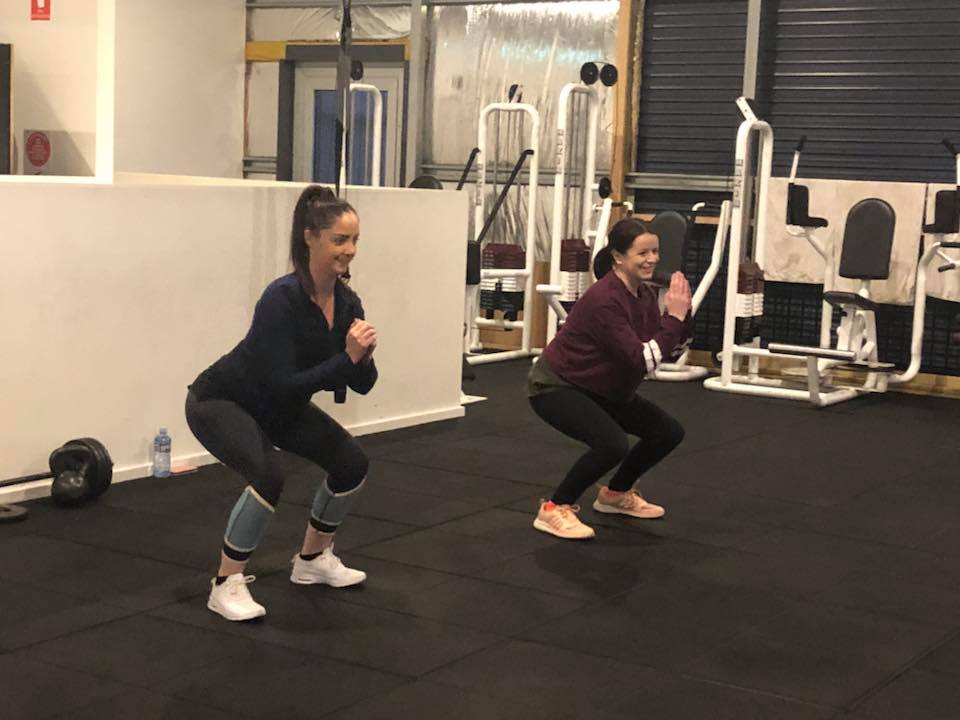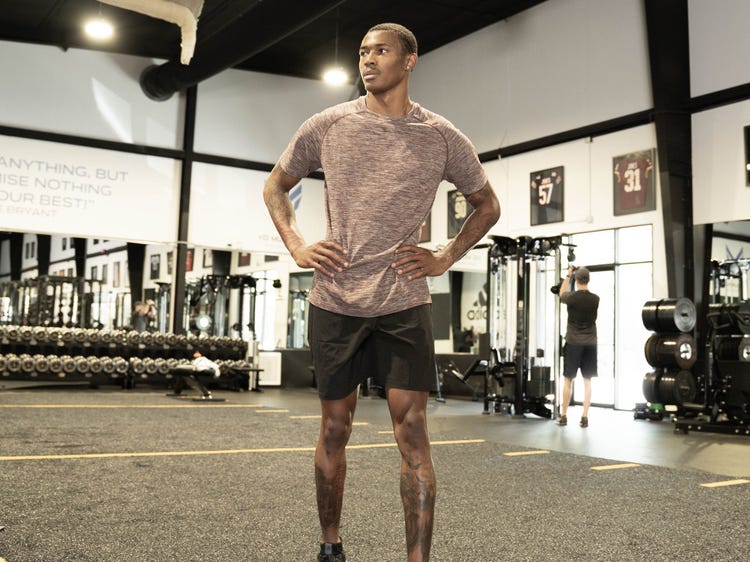
The similarities and differences in yoga and Pilates might confuse you if you're trying to decide which exercise to try. Both of these exercise are based on deep breathing. Although they might seem similar, each one has its own benefits and focuses on different parts. Pilates was created originally to help World War I veteran's recover their bodies and minds. It quickly gained popularity with dancers who wanted to improve their performance.
Both yoga as well as Pilates have numerous benefits. Both strengthen the muscles and provide flexibility. Your healthcare provider should help you decide which one is right. Both exercises can help improve flexibility and reduce stress. You can also try different classes to find the one that works for you. Whether you decide to try Yoga or Pilates is a personal choice and a matter of personal preference.

While both are great for building core strength and flexibility in a fast-paced environment, there are some differences between the two exercises. Pilates emphasizes muscle strengthening while yoga is a more gentle workout. Yoga, on one hand, helps align your body and gravity with your body, improving your posture. Before you decide to start a class in yoga or Pilates, make sure to consult your healthcare provider.
Both yoga and Pilates both focus on breathing. Although yoga is more expressive, Pilates is much more physical. It requires more concentration and focus that Yoga. But both are excellent full-body workouts. You will get results no matter which method you choose, yoga or Pilates. Remember these things when choosing which program to try. You'll soon find that your choice will be easy. You'll find that Pilates is safer than most other exercise methods.
Although Pilates and yoga have some similarities, both are good for core strength. The exercises are what distinguish them. Yoga is more focused on strengthening the core, and Pilates is more about developing body awareness. Both exercise methods aim to improve strength and flexibility as well stability. You can either do Pilates on a mat or on special machines depending on which style you choose. Here are some considerations to make when choosing the right type of exercise for you.

One of the main differences between Pilates and yoga is the importance of alignment and precision in movement. Pilates focuses on the powerhouse muscles in the spine and hips, while yoga targets the body's flexibility throughout the entire body. While equipment is often used in yoga classes some of the exercises are mostly done on a mat. Both yoga as well as Pilates emphasize the core and extremities of the body. Different forms offer different benefits to different people.
For the best results, you should be practicing the exercises at least two to three times per week. Beginers can attend classes twice a week, while more advanced users should practice three to four times a week. For beginners, it is recommended to practice at least twice per week and include some home exercises. It is important to determine which type of exercise you like best. It's now time to start practicing the exercise at home.
FAQ
Is Cardio Better Than Strength Training?
Both are equally good. Cardio is better if you are looking to build muscle faster.
Cardio burns more calories per minute than strength training and burns more fat.
Strength training builds muscle mass, but it takes longer to achieve this goal than cardio.
What does the milk do for men
Next time you buy milk think about what you could do with it. It might also help if you start drinking less coffee.
Children and adults both have found milk to be beneficial. Milk is rich in nutrients for children, including vitamin D and calcium.
It promotes weight gain, digestion, bone strength, and aids digestion. People who consume dairy products have lower rates of illness and better immune systems.
Also, milk is rich in lactose so people who can't digest this sugar well can still reap the benefits of it without any stomach issues.
Try drinking more milk instead of soda or juice. Drinking milk with more calcium and vitamin A can help to strengthen your teeth.
Plain low-fat milk can be used to make yogurt if you don’t like the taste. Yogurt is an excellent alternative to milk because it is lower in calories, and contains more protein.
Yogurt also includes probiotics. These help in digestion and improve immunity.
Try warm milk to help you fall asleep. Warm milk relaxes the muscles and increases serotonin levels. It will give you a restful night.
What is your favorite workout order?
It all depends on what you're looking for. You should start with heavy weights if your goal is to build muscle mass. Next, you can move onto cardio. For those who want to lose weight or exercise, you can switch from cardio to strength-training.
Start with cardio if you only want to lose fat. Then add strength training after.
Cardio is the best way to build muscle mass.
Before you start your workout, it is a good idea to eat. You will be able to give your muscles more fuel so they can work harder. This will make you feel better while working out.
Is cardio exercise good for your health or bad?
Cardiovascular exercise is a great way to improve your cardiovascular health. It improves blood flow, strengthens your heart muscle and increases stamina.
Cardiovascular exercise includes running, biking, hiking, swimming, tennis, basketball, soccer, volleyball, football, etc.
It is important that cardio exercises are not performed at high intensities. This could cause injury.
You should only perform the cardiovascular exercise if you are feeling well.
You should never push yourself beyond your limits. This could lead to injury.
Warm up is the best way to start cardiovascular exercise. Then, gradually build up to higher intensity levels.
Remember, you should always listen to your body. If you feel pain, stop doing cardio exercise immediately.
After a cardiovascular training session, it is recommended that you take some time to relax. This will give your muscles time for recovery.
Cardiovascular exercise is essential for losing weight.
It is the most efficient way to lose weight and stomach fat.
What's a good workout plan for 7 days?
A seven-day exercise program should consist of three days per week of cardiovascular training (running, biking, swimming), two strength exercises (using free weights, weight machines), and one flexibility/core workout (yoga, Pilates). It's essential to do each activity at least once a week. Each session should last no more than 45 minutes.
Cardiovascular Exercises: Swimming, Cycling, Running
It is important to complete at least 60 minutes of cardio per week. Aim for 75 minutes per week to get the best results. Cardio exercises can be used to increase blood flow, stimulate muscle growth, and improve blood circulation.
Strength Training
Cardio exercises focus on the heart and lungs while strength training targets muscles and bones. Strength training is a great way to build lean muscle mass that helps you burn calories even if you are not actively exercising.
Flexibility and Core Workouts
To strengthen your whole body, flexibility and core work outs are excellent ways to do so. Both yoga or Pilates are great options.
How many calories should I consume daily?
This varies from person to person. The average is 2000 - 2500 calories per day. Based on your age, gender, height and activity level, you will need to calculate how many calories you require.
Statistics
- According to the American Academy of Dermatology (AAD), men over 50 are at a heightened risk of developing it. (healthline.com)
- Cardmembers earn 5% Back at Amazon.com with a Prime Credit Card. (amazon.com)
- Candidates and applicants must pass all four tests at 70% (minimum level) to graduate from Basic Deputy U.S. Marshal (BDUSM) Training. (usmarshals.gov)
- The PRS enabled risk stratification for overall prostate cancer and lethal disease with a four-fold difference between men in the highest and lowest quartiles (HR, 4.32; 95% confidence interval [CI], 3.16-5.89). (pubmed.ncbi.nlm.nih.gov)
- An estimated calorie range for moderately active adult males falls between 2,200 to 2,800 calories per day, depending on age. (eatright.org)
External Links
How To
How can I exercise to burn fat?
Exercise burns calories through increased metabolism and oxygen consumption.
You'll lose weight safely if you exercise at moderate intensity.
These tips will help you burn fat and keep fit while exercising.
-
Cardio exercises include swimming, running or cycling.
-
For 30 minutes, do it three times a week.
-
You can add strength training into your exercise routine if you're looking to lose even more weight.
-
Avoid intense exercise. You can build muscle and not break down muscle tissue.
-
Keep hydrated during exercise. Water flushes out toxins and helps keep the body hydrated.
-
After working out, drink low-fat protein shakes. Protein shakes repair muscles and increase energy.
-
Smaller meals are better for you.
-
Don't skip breakfast! Skipping breakfast can make you tired and sluggish.
-
Take care of your mind. Stressful situations can slow down metabolism.
-
Keep a positive attitude. Studies show that overweight people are more likely to be obese than those who perceive themselves as attractive.
-
Get enough rest. Lack of sleep makes it harder to burn fat.
-
Stay active. Keep moving every hour.
-
Maintain a healthy diet. Healthy eating will keep you fuller and more satisfied for longer.
-
Find relaxation techniques. A tense mind doesn't allow your body to release stress hormones that break down muscle tissue.
A balanced diet includes all essential nutrients needed for growth and development.
Six small meals per day is better than three large meals. This gives your body more time to digest the food you eat.
Calcium is required to support strong bones. Calcium is available in dairy products like milk, yogurt, fortified soy beverages, orange juice, cereal, bread, and cereals.
Calcium is found in leafy vegetables, beans and tofu, as well nuts, seeds and cheese.
Vitamin D is essential for calcium absorption. Vitamin D can also be found in some fortified foods such as eggs, fish, and yolk.
Vitamin E is crucial for skin health. Vitamin E is found in vegetable oils and wheat germ oil, as well as peanuts, almonds and sunflower seeds.
Your body needs zinc to maintain normal immune function and heal wounds. Zinc can be found as a mineral in oysters.
Zinc deficiency could cause fatigue, nausea, vomiting, and depression.
Insulin resistance is caused by eating too much sugar, which can increase blood glucose levels. Insulin resistance is linked to weight gain.
High levels of free radicals can lead to insulin resistance. Free radicals are molecules with unpaired electrons that damage cell membranes and other parts of the body.
Food additives, pesticides and herbicides, as well as preservatives, smoking and radiation are all sources of free radicals.
Free radical damage may lead to cancer, heart disease diabetes, arthritis, asthma and other conditions.
To prevent free radical damage, eat a healthy diet rich in antioxidants. Antioxidants protect against oxidative damage.
Vitamin C can be found in citrus fruits. Beta carotene can be found in carrots. Sweet potatoes. Tomatoes. Carrots. Sweet potatoes. Spinach. Broccoli. Cantaloupe. Vitamin E is found in nuts. Olive oil, avocados.
Additional antioxidant nutrients include selenium and copper, manganese and zinc.
Selenium protects cells against oxidative damage from free radicals. Selenium is found in Brazil nuts, tuna, liver, kidney, shrimp, cod, turkey, beef, lamb, pork, and chicken.
Copper protects your eyes, brain, eyes and red blood cell. Copper can be found in shellfish and poultry as well as meat and organ meats.
Manganese is an essential component of bone structure. Manganese may be found in brown rice or spinach, bananas and prunes as well raisins, oatmeal and lentils.
Zinc helps with normal growth, reproduction, as well as wound healing. Zn can be found in lean cuts, white fish, poultry, eggs, and other foods.